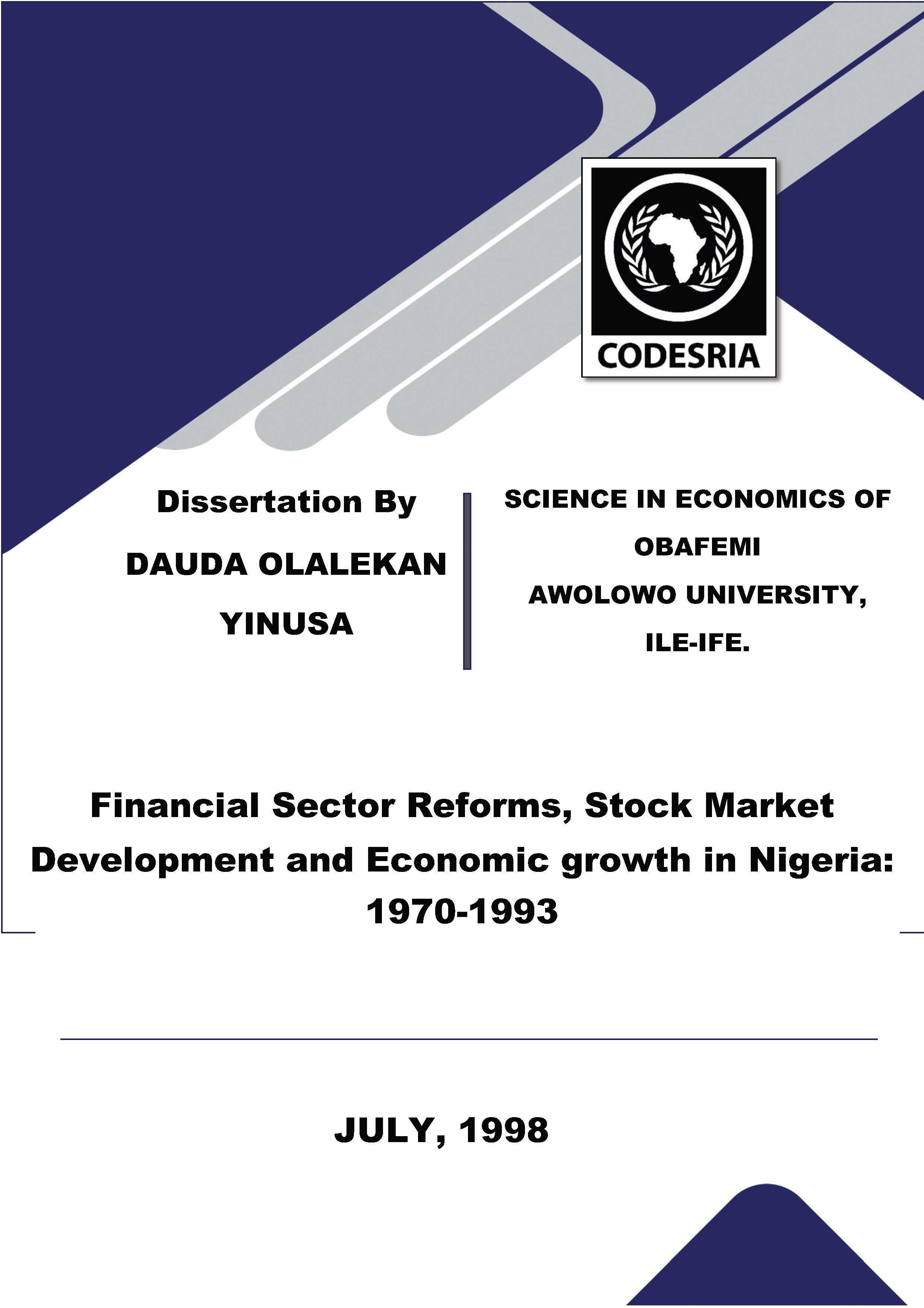Financial Sector Reforms, Stock Market Development and Economic growth in Nigeria: 1970-1993
Keywords:
financial market, economic growth, securities, exchange rate, financial systems, financial liberalization, NigeriaSynopsis
This study provided an empirical analys:s of the impact of financial sector reforms
on Stock Market Development in Nigeria. The study also verified the relevance of Stock
Market for economic growth. To achieve the above stated objectives, three equations
were fonnulated and using time series quarterly data, Two Stage Least Squares(2SLS)
estimation technique was employed to estimate the parameters of our variables for the
period 1970-1993.
The results of the Stock Market Equation show that financial sector reforms had
contributed significantly to Stock Market Development in Nigeria. For the growth
equation, Stock Market index indicates a positive' and significant association with
economic growth.
The policy implication-of the f'i ndi,,n gs are, first, government should avoid financial
repression and lean more to~ar-ds- lhe side of carefully designed and consistently
implemented policy of deregulation since financial reform affects Stock Market
development positively. Particular attention should be given to exchange rate and
financial structure policies because of tl1eir possible destauilizing effects if not well
managed. Second, policy makers should endeavour to encourage S_tock Market
development so as to actualise their vision of sustained and real growth in the furure.
Downloads
References
Agenor, Pierre - Richard (1990), "Stabilization Policies in Developing Countries with
a Parallel Market for Foreign Exchange: A Formal Framework" ,IMP Staff
papers, Vol. 37 (September) pp. 560 - 92.
Alile, H. I. and Anao, A. A. (1986), The Nigerian Stock Market in Operation, Nigeria
Stock Exchange, Lagos.
Atje, R. and B. Jovanovic (1993), "Stock Markets and Development", European
Economic Review, Vol. 37. No .. 2/3 (April) pp. 632-40.
Bagehor, W. (1962), Lonbard Street Homewood, Ill,.: Richard D. Irwin.
Balassa, B. A. (1964), Trade Prospects for Developing Countries, Homewood, III,Iiwin.
Bencivenga, V. R., B. D. Smith, and R. M. Starr (1996), · "Eq~ity Markets, Transactions
Costs and Capital Accumulation: An Illustration", The .World Bank Economic
Review, Vol. 10 No. 2 pp. 241-65.
Blinder, A. S. (1987), "Credit Rationing and Effective Supply Failures", Economic
Journal, 97, (June) pp. 327-52.
Blommesterin, H. J. (1993), "Financial Sector reform and Monetary Policy in Central
and Eastern Europe", in Fair, D. E. and Raymond, R. J. (eds.) The New
Europe:. Evolving Economic and Financial System in East and West,
Kluwer Academic Publisher, ~etherlands, pp. 363-89.
Bird, G. (1984), "Balance of payments Policy in Developing Countries", In Tony
Killick (ed): The Quest for Economic Stabilization: The !MF and the Third
world, Heinemann Educational Books, pp. 85-127.
Brnno, Micheal (1979), "Stabilization and Stagflation in a se:mi-industrialised economy".
In Dornbusch, R. and Frenkel, J. A. (eds): Interi:iational Economic Policy:
Theory and Evidence, Baltimore, John Hopins University Press, Baltimore.
Buckle, M. and J .L. Thompson (1992), The United Kingdom Financial System in
Transition- Theory and Practice, Manchester University Press, Oxford,
U.K.
Cameron, Rando (1967), Banking in the Early Stages of Industrialization, Oxford.
University Press, Oxford. pp 1-9.






